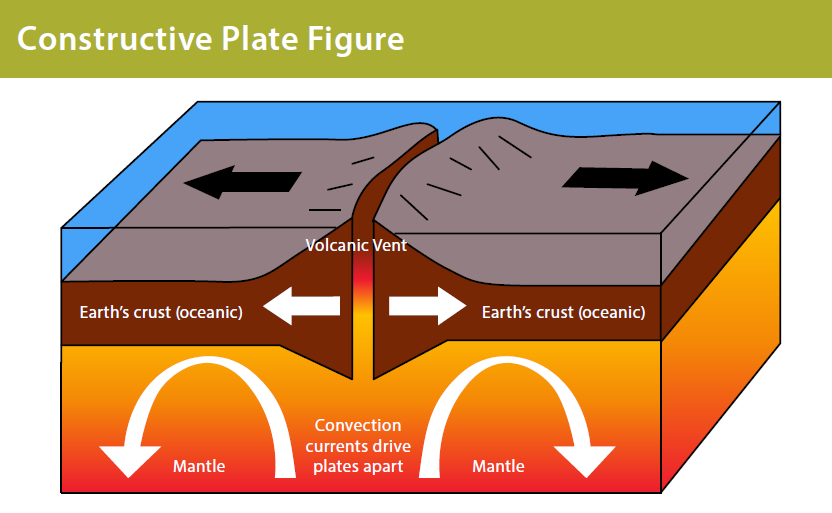Plate margin/ boundary- zone where 2 plates meet. May be described as constructive, destructive, conservative or collison.

When plates are pushed apart, so they move away from one another and new crust is created.
Mid-Ocean ridges- Where two plates made of oceanic crust move apart, the magma of the mantle rises to fill the gap, causing the crust to rise and form a ridge.
Comments
No comments have yet been made